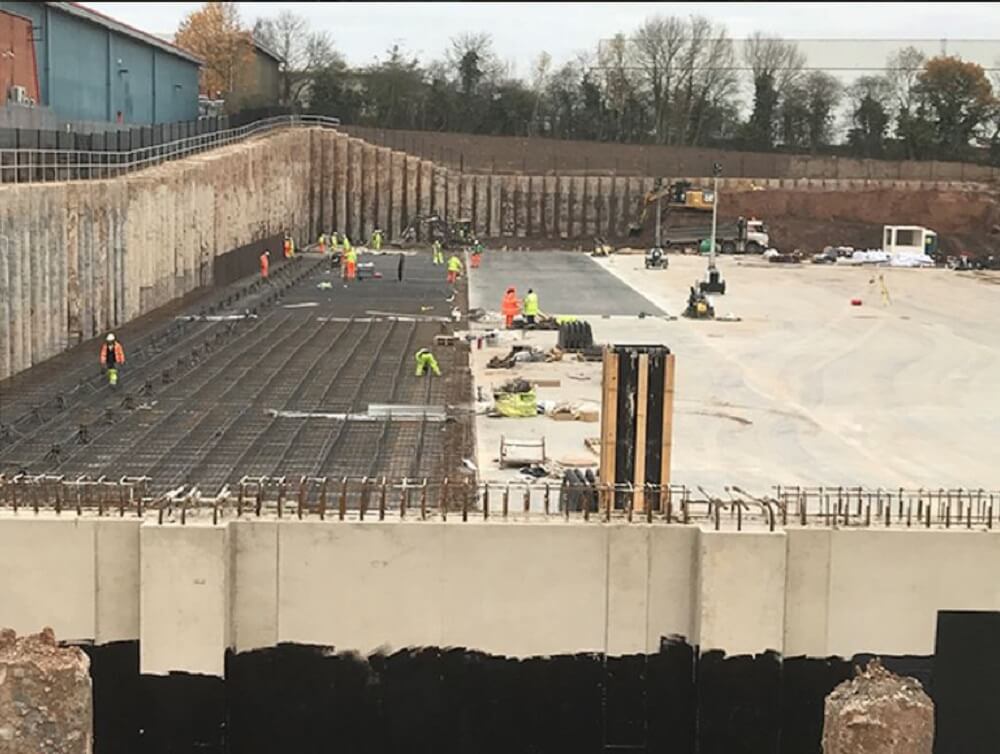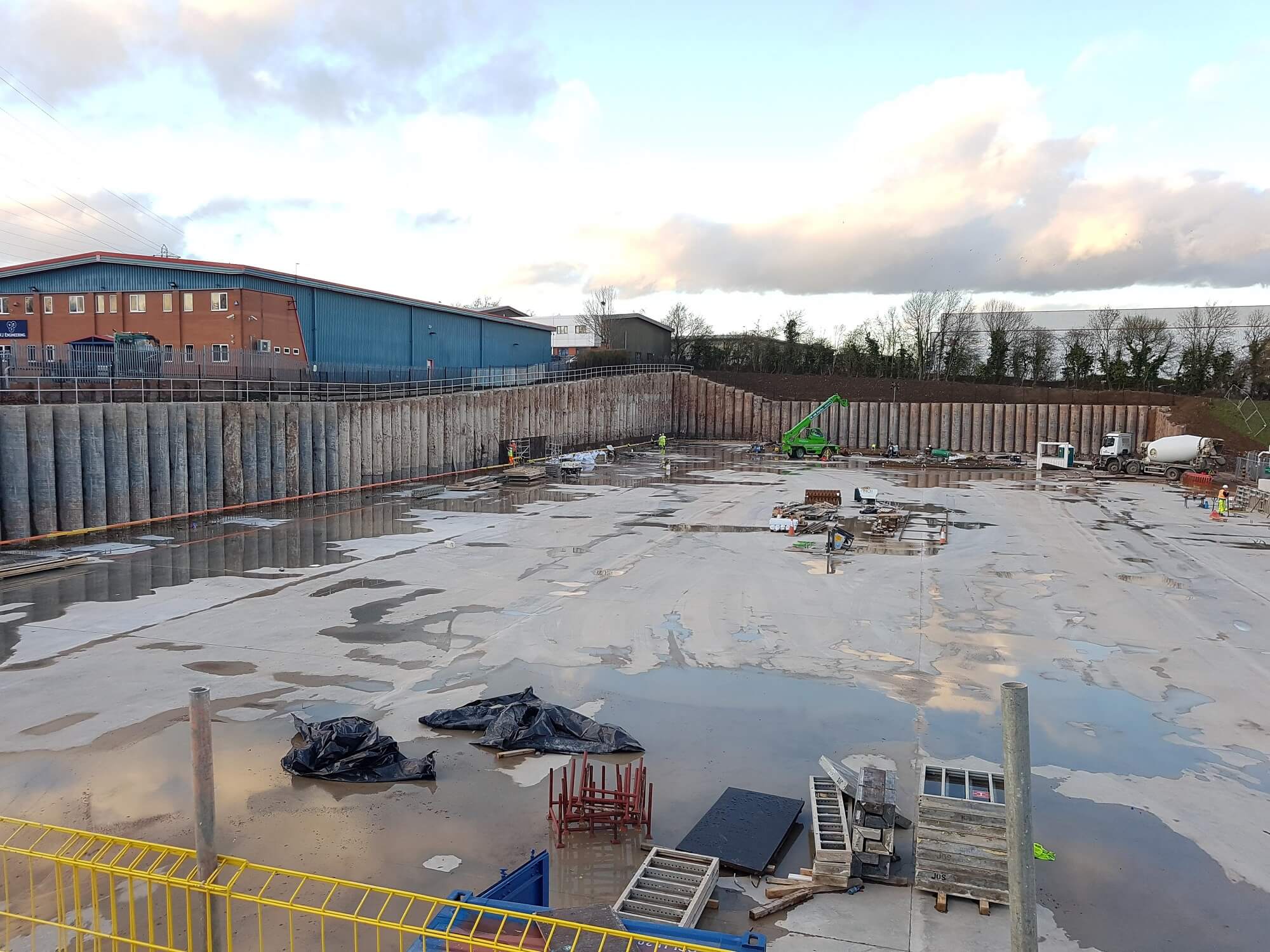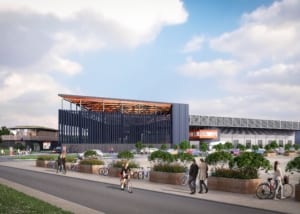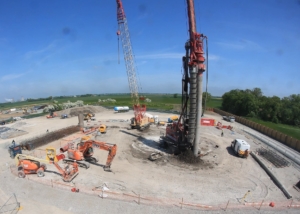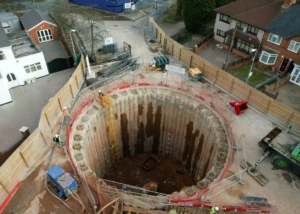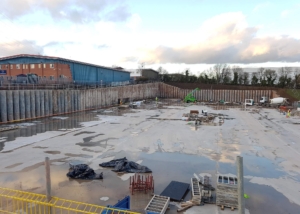THE SCHEME
Britvic, is a leading soft drinks company, with a strong portfolio of brand names including Robinsons, Tango and J20. As part of their strategic growth plans, the company is developing the facilities at their largest production site in central Rugby – this current project will see a new distribution warehouse built alongside the existing bottling plant. When complete, the warehouse will comprise a fully automated high bay storage unit extending to 35m in height, connecting to a 2-storey low bay loading and office unit.
PLANNING AND PRE-CONSTRUCTION
Due to the natural topography of the site and the planned warehouse location, there was a requirement for a substantial retaining wall to hold back neighbouring businesses and highways. The sequence and planning of the works was critical to ensure efficient working and deliver the project within the stringent timescales required.
To determine the most efficient sequence, for the project, regular workshops were held between Bachy Soletanche and Buckingham Group.
Bachy Soletanche could offer the large diameter of pile required for the wall to work in cantilever, without affecting the neighbours through use of anchors or large deflections. This achievement was even more impressive due to the retained height of the wall being in excess of 11m, at its highest point. The warehouse was designed to be structurally independent and therefore the wall could not use this as any form of propping.
PILING OPERATIONS
The team installed a contiguous piled retaining wall using a combination of CFA and rotary bored piling techniques. The wall was formed using 165 piles, with a diameter of 1200mm and bored to a maximum depth of 20m.
To address the issue of the varying ground levels, the contiguous wall was stepped in height by up to five metres across the site, therefore a number of plateaus were created for the piling works to be installed from, with ramp access between the levels.
Adding to the complexity, each reinforcement cage was unique. The reinforcement cages were fabricated off site and owing to the limited working space the cages were delivered on a ‘just in time’ basis. This required detailed planning due to a three-week lead time for the prefabricated steel.
